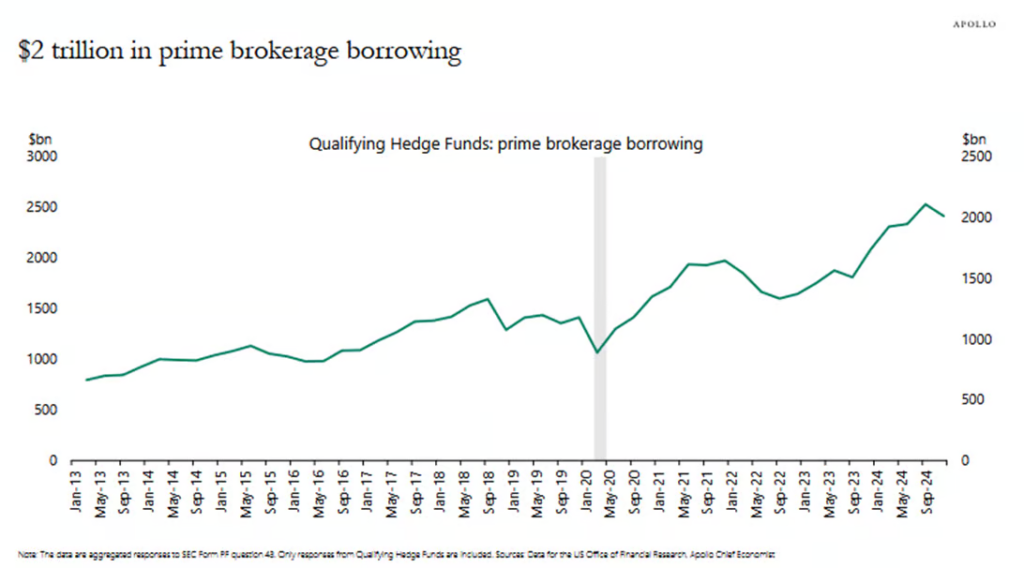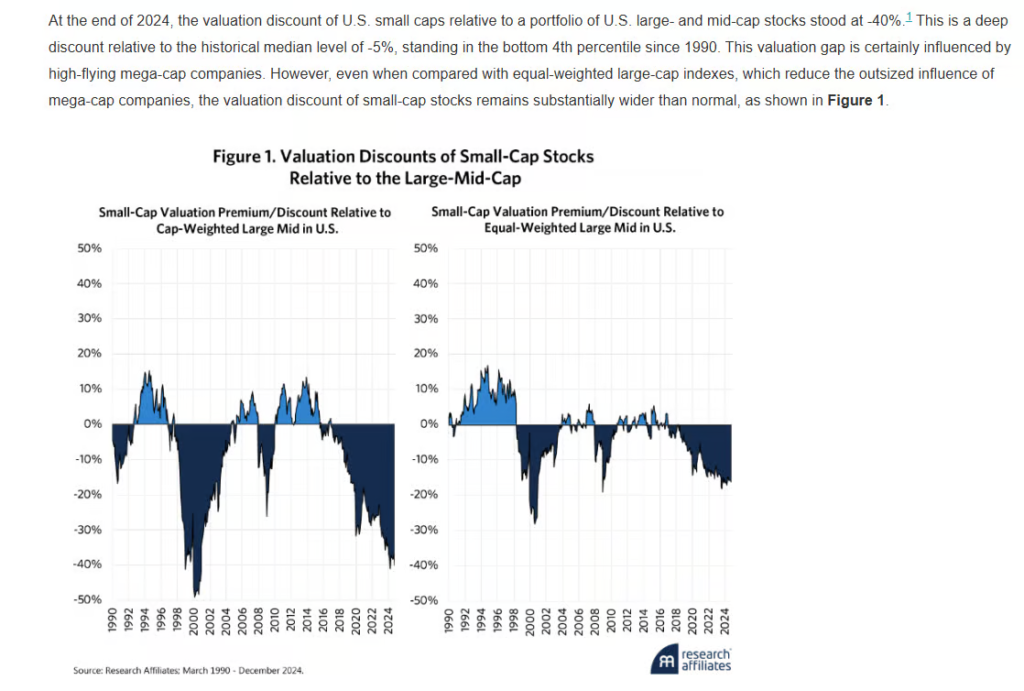1. XLK Tech ETF Holding 200-Week Moving Average on Long-Term Chart

StockCharts
2. Semiconductor ETF SMH-Same Story

StockCharts
3. $2 Trillion in Prime Brokerage Borrowing

Apollo
4. ROBO-Everyone Talking Robots…ETF New Lows

StockCharts
5. Same with Lithium ETF

StockCharts
6. Small Cap Discount Now in 4th Percentile

VettaFi
7. RIP to the IPO comeback…It Will Be 4 Years in a Row with Lower Number of IPOs
Via Business Insider: A few months ago, after years of abysmal performance, it looked like IPOs were finally set for a comeback. ServiceTitan, a software platform for general contractors, saw its stock soar by 35% after its debut in December. A bunch of hot companies were lined up to go public: the buy-now, pay-later lender Klarna, the ticket reseller StubHub, and the AI infrastructure provider CoreWeave. Silicon Valley, it seemed, was about to return to the good old days, when snazzy new startups could expect a huge payoff on Wall Street. “All signs were pointing to 2025 as the year when we would finally get some IPOs,” says Matt Kennedy, a senior strategist at Renaissance Capital.
But now, the long-anticipated boom in IPOs has suddenly gone bust. CoreWeave’s public offering in March was the biggest tech IPO since 2021, but it was forced to price itself well below the expected range. And on Friday, StubHub and Klarna both delayed their planned IPOs, as Donald Trump’s tariffs sparked a huge slide in the stock market. IPO analysts at Renaissance now estimate that there could be as few as 150 deals this year, which would make 2025 the fourth straight down year for IPOs.
“This is going to shut down the IPO market,” Kennedy says. “The question is, for how long?”

StockCharts
8. Housing in South Update
New single-family houses for sale in the South, where Florida is by far the largest housing market, have ballooned past the Housing-Bust high since mid-2024 to a range between 290,000 to 304,000 houses for sale, with 296,000 new houses for sale in February, up by 72% from February 2019, according to Census Bureau data, which doesn’t provide state-level data, only regional data.
Those new houses are adding large amounts of additional supply to the surging inventories of existing homes. Homebuilders are the pros in this business, they know how to move the inventory: price cuts, building at lower price points, large-scale mortgage-rate buydowns, and incentives. And homeowners wishing to sell have to compete with this supply of new houses and increasingly aggressive builders.

Buyers are still on strike: In the South, pending sales of existing homes rose month-to-month in February, seasonally adjusted, but were down by 3.4% from the collapsed levels February last year, and booked the worst February in the data from the National Association of Realtors. Compared to 2019, pending sales plunged by 29%.

Wolfstreet
9. Where AI Infrastructure Money is Spent

Capital Group
10. How to Become an Expert
Via Barking Up The Wrong Tree: Here’s how to become an expert at anything:
Concepts First: Learning the fundamental principles instead of just the immediate behaviors is the difference between being a cook and being a chef.
It Needs To Be Difficult: If you’re doing it right, you don’t feel like an expert; you feel like a person who has been mildly electrocuted by their own ambition. It’ll make you wonder if ignorance really is bliss. But an arduous process is what creates mastery.
Don’t Cram: Distributed practice is the sensible Volvo of studying techniques. You’re supposed to take things step-by-step, day after day, until the knowledge seeps into your brain and settles down like a retired couple moving to Florida. Your brain hates the quickie approach and prefers to be seduced gradually, like a Jane Austen character.
Feedback: It’s not “feedback”; it’s a forensic investigation into your incompetence. Find a mentor.
Retention: The “decay curve” is like a ski slope, except there’s no lodge at the bottom — just a pit of “Whoops, I forgot how to speak Spanish.” Overlearning is repetitive, it’s boring, it’s the linguistic equivalent of hitting your head against a wall until the wall starts to feel bad for you. But that’s how you make stuff stick. Wax on, wax off, Daniel-sa